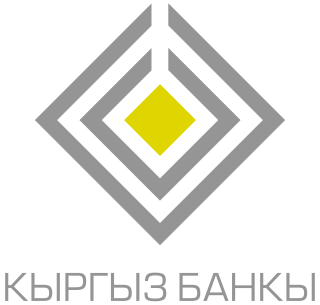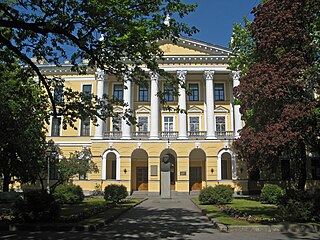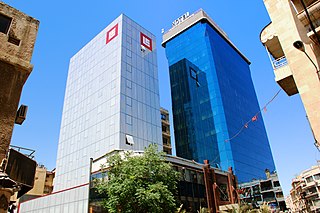
The economy of Kyrgyzstan is heavily dependent on the agricultural sector. Cotton, tobacco, wool, and meat are the main agricultural products, although only tobacco and cotton are exported in any quantity. According to Healy Consultants, Kyrgyzstan's economy relies heavily on the strength of industrial exports, with plentiful reserves of gold, mercury and uranium. The economy also relies heavily on remittances from foreign workers. Following independence, Kyrgyzstan was progressive in carrying out market reforms, such as an improved regulatory system and land reform. In 1998, Kyrgyzstan was the first Commonwealth of Independent States (CIS) country to be accepted into the World Trade Organization. Much of the government's stock in enterprises has been sold. Kyrgyzstan's economic performance has been hindered by widespread corruption, low foreign investment and general regional instability. Despite those issues, Kyrgyzstan is ranked 70th on the ease of doing business index.
The money market is a component of the economy that provides short-term funds. The money market deals in short-term loans, generally for a period of a year or less.

The Central Bank of Ireland is the Irish member of the Eurosystem and had been the monetary authority for Ireland from 1943 to 1998, issuing the Irish pound. It is also the country's main financial regulatory authority, and since 2014 has been Ireland's national competent authority within European Banking Supervision.

Fractional-reserve banking is the system of banking in all countries worldwide, under which banks that take deposits from the public keep only part of their deposit liabilities in liquid assets as a reserve, typically lending the remainder to borrowers. Bank reserves are held as cash in the bank or as balances in the bank's account at the central bank. Fractional-reserve banking differs from the hypothetical alternative model, full-reserve banking, in which banks would keep all depositor funds on hand as reserves.
In the mid-1980s, Communist Czechoslovakia was prosperous by the standards of the Eastern Bloc, and did well in comparison to many richer western countries. Consumption of some goods like meat, eggs and bread products was even higher than the average countries in Western Europe, and the population enjoyed high macroeconomic stability and low social friction. Inhabitants of Czechoslovakia enjoyed a standard of living generally higher than that found in most other East European countries. Heavily dependent on foreign trade, the country nevertheless had one of the Eastern Bloc's smallest international debts to non-socialist countries.
The economic history of the Republic of Turkey had four eras or periods. The first era had the development policy emphasizing private accumulation between 1923 and 1929. The second era had the development policy emphasized state accumulation in a period of global crises between 1929 and 1945. The third era was state-guided industrialization based on import-substituting protectionism between 1950 and 1980. The final, era was the opening of the economy to liberal trade in goods, services and financial market transactions since 1981.
The economic history of China describes the changes and developments in China's economy from the founding of the People's Republic of China (PRC) in 1949 to the present day. The speed of China's transformation in this period from one of the poorest countries to one of the world's largest economies is unmatched in history.

The National Bank of the Kyrgyz Republic is the central bank of Kyrgyzstan and is primarily responsible for the strategic monetary policy planning of the country as well as the issuance of the national currency, the Som.

The State Bank of the Russian Empire was the dominant financial institution of the Russian Empire from its founding in 1860 until the Empire's end in 1917. A public bank headquartered in Saint Petersburg, it initially coexisted within the Empire with the Bank Polski until the latter was deprived of its residual monetary role in 1870, and with the Bank of Finland which soon defined a separate monetary zone for the Finnish markka. In 1897, with the Russian adoption of the gold standard, the State Bank fully took the attributes of a central bank, while keeping a significant additional role of commercial and development lending that made it the main source of credit to the Russian economy.
China's banking sector had CN¥319.7 trillion in assets at the end of 2020. The "Big Four" state-owned commercial banks are the Bank of China, the China Construction Bank, the Industrial and Commercial Bank of China, and the Agricultural Bank of China, all of which are among the largest banks in the world As of 2018. Other notable big and also the largest banks in the world are China Merchants Bank and Ping An Bank.
The history of banking in China includes the business of dealing with money and credit transactions in China.
Trade is a key factor of the economy of China. In the three decades following the dump of the Communist Chinese state in 1949, China's trade institutions at first developed into a partially modern but somewhat inefficient system. The drive to modernize the economy that began in 1978 required a sharp acceleration in commodity flows and greatly improved efficiency in economic transactions. In the ensuing years economic reforms were adopted by the government to develop a socialist market economy. This type of economy combined central planning with market mechanisms. The changes resulted in the decentralization and expansion of domestic and foreign trade institutions, as well as a greatly enlarged role for free market in the distribution of goods, and a prominent role for foreign trade and investment in economic development.
Banking in Bhutan, a small country in East Asia, is an industry that has grown slowly as the country has pursued modernization. The country has a vibrant informal culture of finance which only weakly integrates formal financial services.
After the dissolution of the Soviet Union in 1991 and the end of its centrally-planned economy, the Russian Federation succeeded it under president Boris Yeltsin. The Russian government used policies of shock therapy to liberalize the economy as part of the transition to a market economy, causing a sustained economic recession. GDP per capita levels returned to their 1991 levels by the mid-2000s. The economy of Russia is much more stable today than in the early 1990s, but inflation still remains an issue. Historically and currently, the Russian economy has differed sharply from major developed economies because of its weak legal system, underdevelopment of modern economic activities, technological backwardness, and lower living standards.
This article details the history of banking in the United States. Banking in the United States is regulated by both the federal and state governments.
The 2003 banking crisis of Myanmar was a major bank run in private banking that hit Myanmar (Burma) in February 2003. It started with a decline in the trust for private financial institutions following the collapse of small financial enterprises and proliferating rumors about the liquidity of major private banks. Leading to a bank run on the Asia Wealth Bank, the crisis quickly spread to all major private banks in the country. It led to severe liquidity problems for private banks and scarcity of the kyat. Though exact data is not available, it is believed that the crisis caused major economic hardship for many in Myanmar.

Banking in Syria is controlled by the Central Bank of Syria which also controls all foreign exchange and trade transactions. All commercial banks in Syria were nationalised in 1966. The Central Bank gives priority to lending to the public sector, while the private sector often banks abroad, a process that is more expensive and therefore a poor solution to industrial financing needs. Many business people travel abroad to deposit or borrow funds. It is estimated that US$6 billion has been deposited by Syrians in Lebanese banks.
Banking in Sudan covers the history, development and structure of banking in the Sudan. From the inheritance of the banking system from the Anglo-Egyptian Sudan to the establishment of the Sudan central bank in 1959 and development of Islamic banking in the mid 1970s.

Banking in Turkey is an important aspect of the financial system Turkey's dynamic economy. Banks handle the majority of money and capital market transactions and activity. Commercial banks make up the majority of Turkey's financial sector, accounting for 91 percent of overall financial sector assets as of 2020.

The banking sector of Ethiopia composed of the central bank, the National Bank of Ethiopia (NBE) and Development Bank of Ethiopia (DBE), which are state owned and thirty private banks. By 2020, the NBE planned to increase the minimum capital for banks to operate to 2 billion birr and instructed all commercial banks to increase their capital. Foreign banks did not allow to provide service in Ethiopia, instead use medium term as the government of Prime Minister Abiy Ahmed pursues wide economic reforms.








